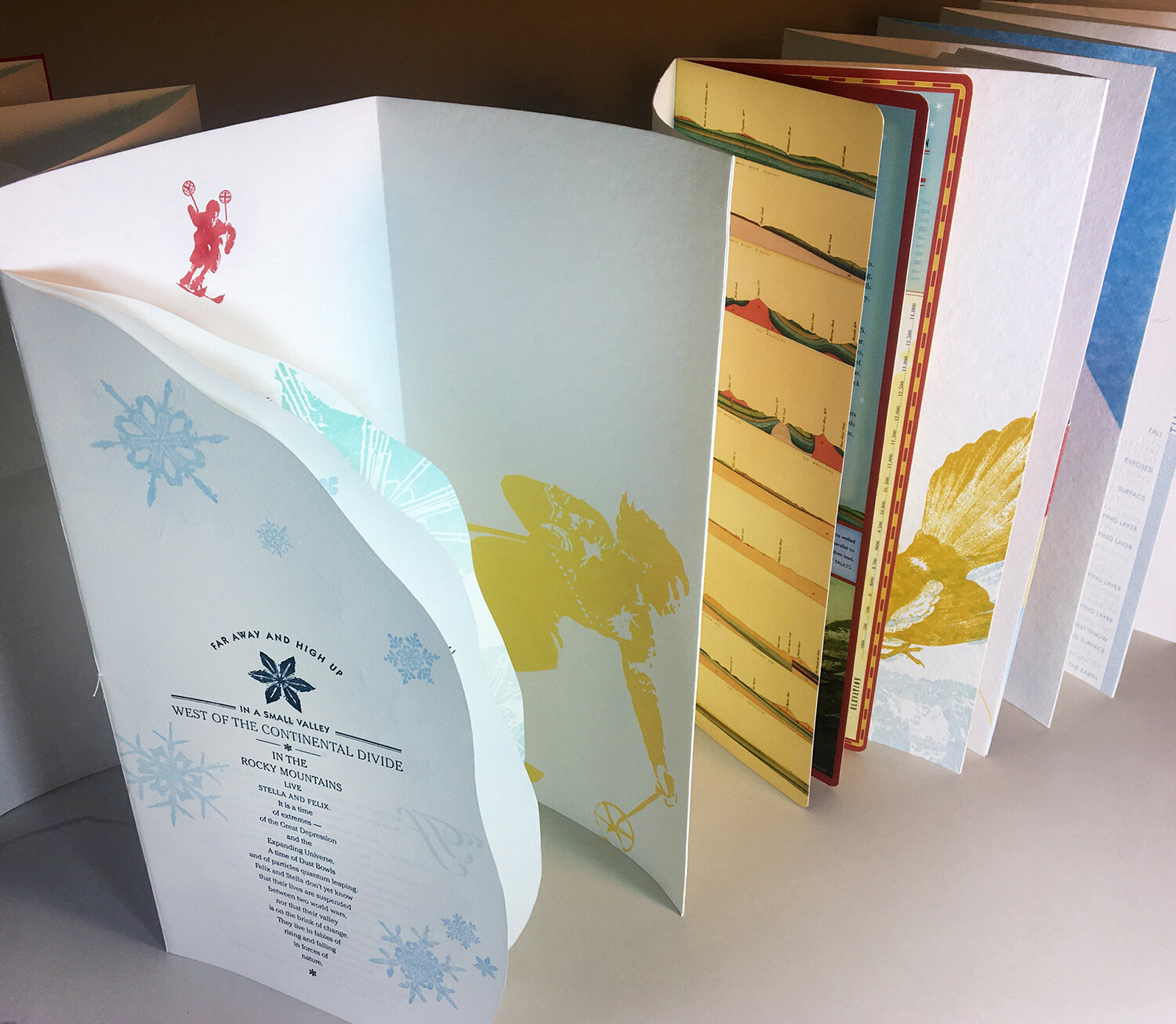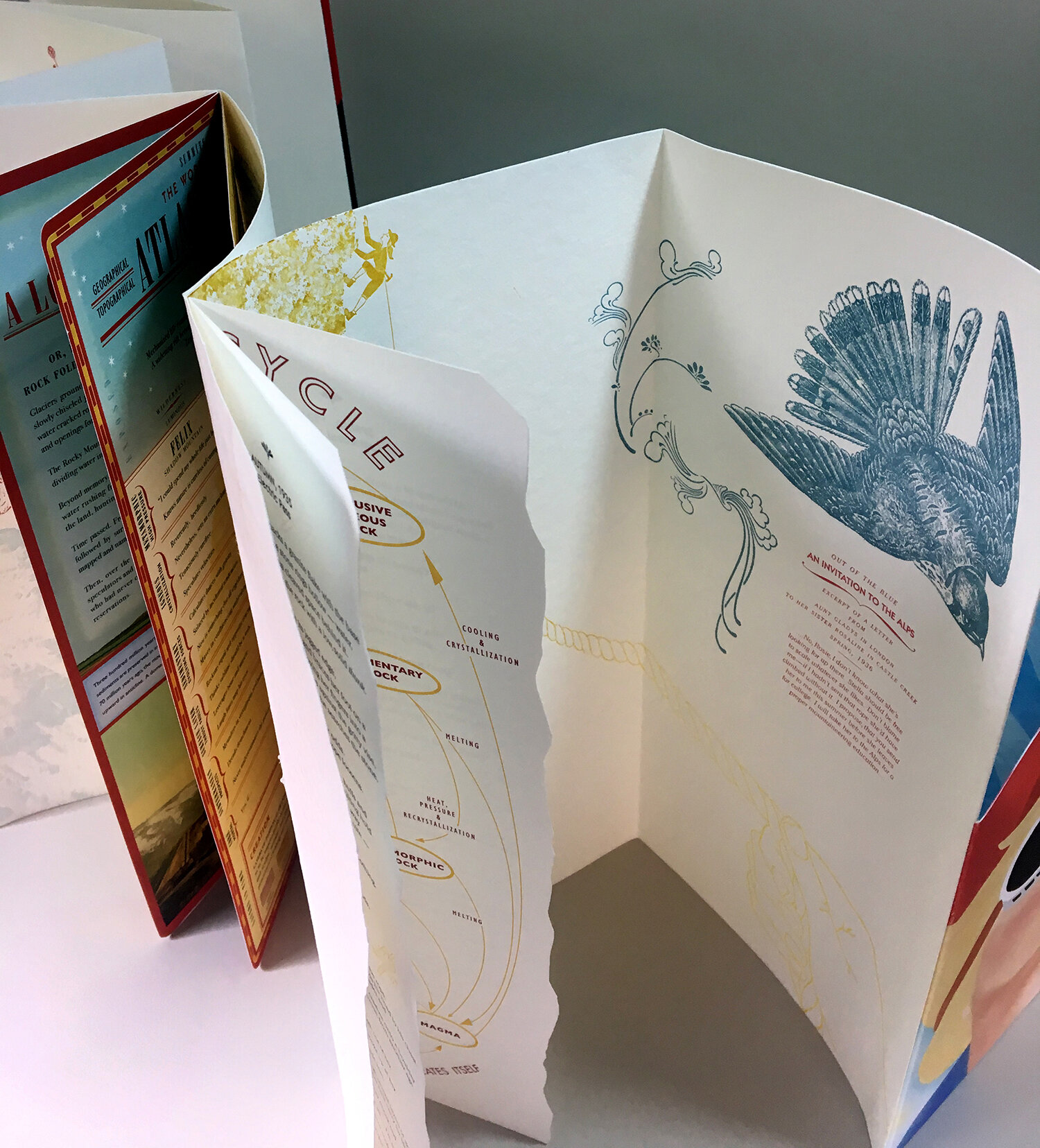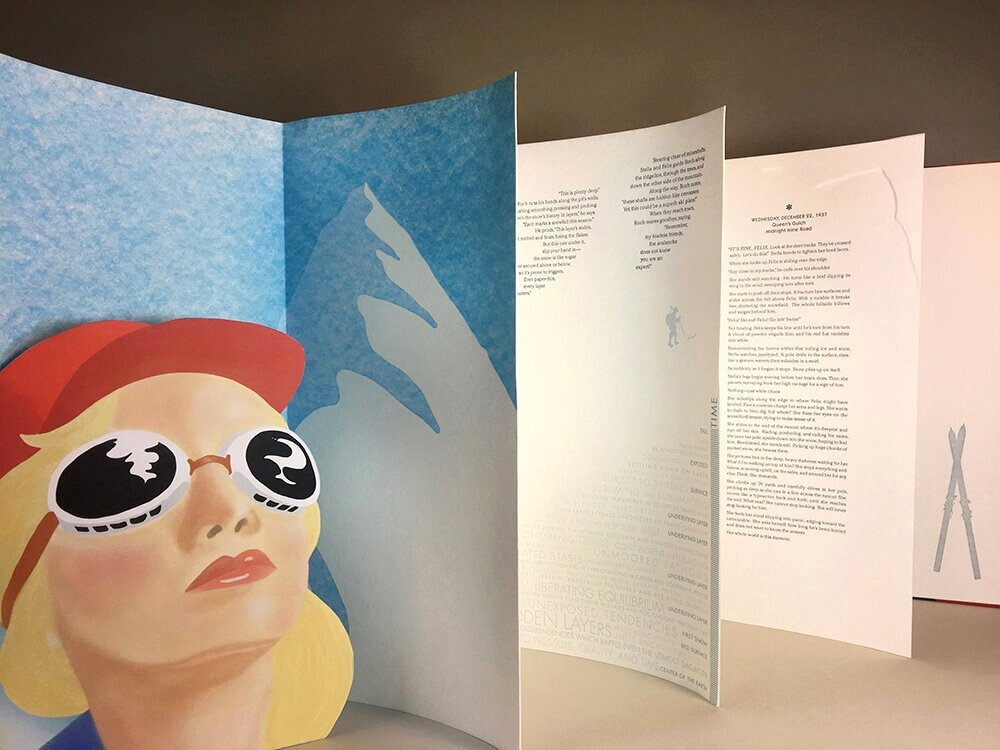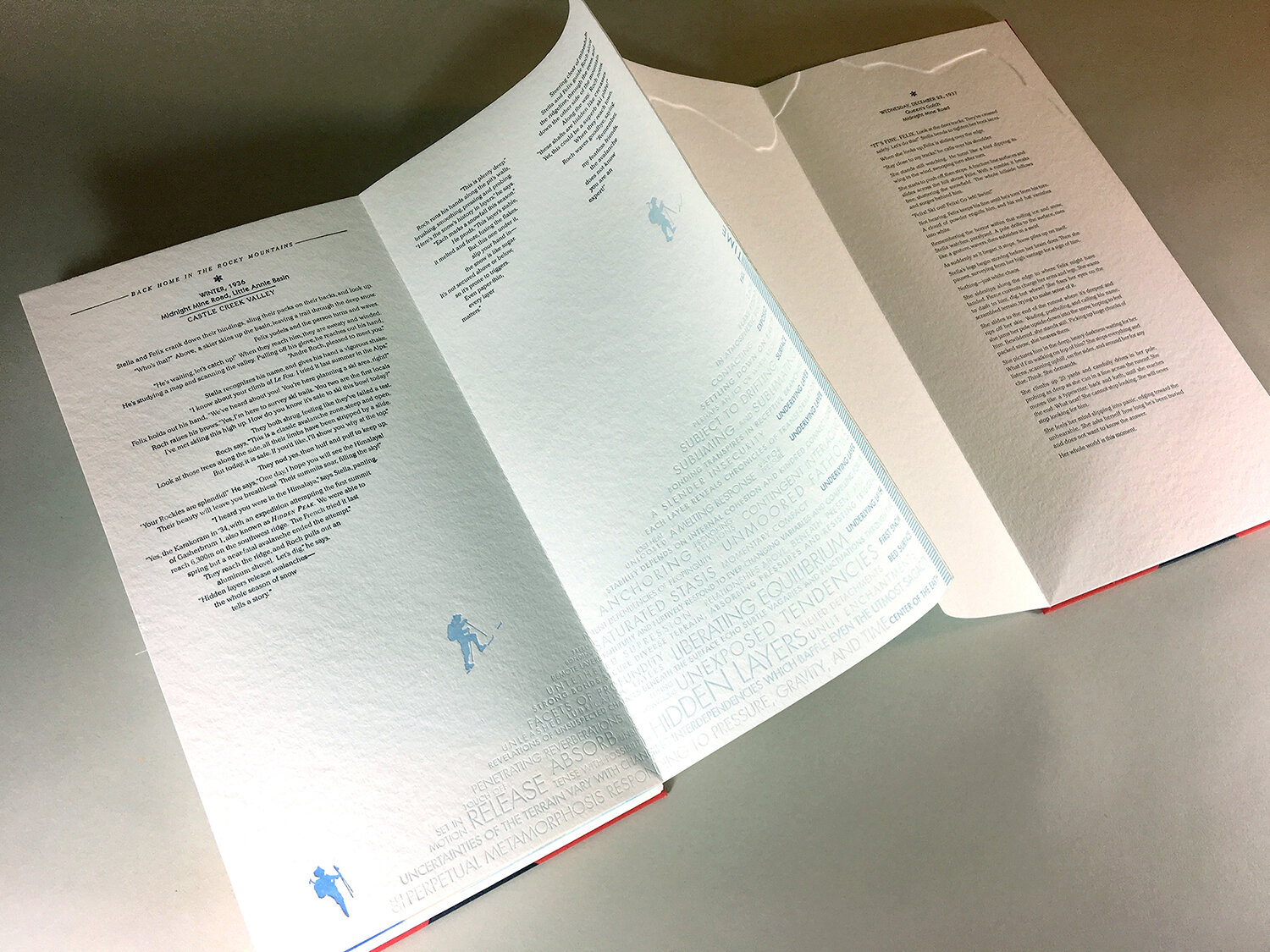






AVALANCHE SAFETY, BOOK I
THE ROCKY MOUNTAINS & THE CHAMONIX ALPS
1934 - 1937
Written, drawn, printed and bound by the artist.
Dimension in inches: 7 x 14 closed; 7 x ~60 accordion open.
Edition of 50; printed in 2020
$1500.
•
Letterpress printed accordion-bound folios with pamphlet-stitched interior booklets.
Printed on a Vandercook 4 with photo-polymer plates and carved linoleum. Two digitally printed, hand-bound fascicles.
Covers are cloth-cornered book board. Paper: Moulin du Gué and Zerkall Book.
Review by Mark Dimunation, Chief, Rare Book and Special Collections Division at Library of Congress
EVERYTHING IS INTERCONNECTED
Steep, snowy slopes are loaded terrains of uncertainty. Hidden layers and changing variables make stability difficult to predict. Stability depends on the cohesion between one particle to another and one layer to another. If the force of gravity outweighs cohesion, a slide is inevitable.
In an avalanche climbers can find themselves in a path of destruction triggered by their own behavior. This book explores how we adapt to continually changing terrain, how we navigate risks and what inspires us into excursions of
uncertainty.
The story begins in the precarious 1930s, high in the Rockies.
Two young mountaineers, Stella and Felix, push the edges of their vulnerability on rock and snow, discovering their relationship with nature.
The story is woven in wilderness. Narrative layers investigate historical landscapes, natural forces and elemental processes in snowflake crystallography, geological metamorphosis and avalanche principles. Nature’s perpetual change and interconnections are touchstones of desire.
Snowflakes
Each of the snowflakes printed in these pages is unique. They fell in the early 20th century and were captured by the photographic microscope of W.A. Bentley.
Atlas Biographica
This sewn-in fascicle topographically maps the story’s characters, charting the intersection of the land and humans. The cover features Geological layers from the 1877 Geographical Atlas of Colorado Surveyed by F.V Hayden.
Stella’s Daybook from 1936 travels in Chamonix.
How do we live with fear?
In a path of human-triggered cataclysm.
In memory of my friend
Kirsten Mahler
1962 - 1987
She lived her love of mountains
Dear Kirsten,
When you didn’t come home from your last climb, I would go up Independence Pass and sit by your little patch of garden. Some of the perennials you’d planted the year before were beginning to sprout. I found a small packet of seeds you’d labeled, merigolds, plant in spring.
I remember our last talk, walking along the Roaring Fork in a snowstorm. You told me dreams for after your traverse of the Alps. We left wet black footsteps in the snowy path behind us.
You have been gone so long. Every passing year is one you never had.
When I was in art school, I was living my dream and I often thought of you and your dreams. Though your life didn’t end in a slide, I began this book with you in mind, and what we risk our lives for. Over the years many layers and themes, meanings and metaphors have piled up.
I started it three times. The book had a life of its own. In the beginning it was all about risk and why we climb. Then I thought, life is like an avalanche we face anew everyday, uncertainties hidden amidst vast beauty. Then I thought it was going to be about the human condition (you would have laughed at that), and our mortality....how we map this inevitability into our existence, navigate, ignore, reckon with it.
I filled three sketch books with research, ideas, drawings and discoveries. Finally I realized the heart of the book was our relationship with nature. The connection of our bodies and earth is unequivocal; yet, our motivations in life, as in climbing, can be complicated.
And then there’s our looming climate crisis which lays bare our species’ relationship with our planet. I set the book in the 1930s, a golden age of alpine climbing, yet a cataclysmic time of extremes with humanity on the brink. Avalanches represent the balance of interdependent elements and how they can be triggered to devastating effect.
And so I began with a snowflake.
These last months, finishing the book, amid a pandemic, the fragility of humanity has been even more evident. How suddenly we can find ourselves overwhelmed by something we can’t control.
And always, I wish you were still here.
As ever,
Casey
Berkeley, CA. July 2, 2020
Uncertainties of the terrain vary with changing dependencies which baffle even the utmost sagacity.








